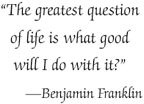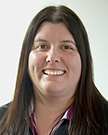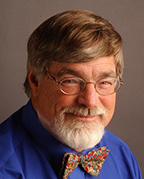2015 Seminars
The 3rd Third will present the following seminars for 2015. Seminars will normally be held in Golden, Colorado, although at times they will be held in other parts of Colorado or broadcast from other locations. Coffee will be available at 9:45 am and all seminars will be from 10:00 am to 3:00 pm Free beverages and lunch will be provided. Those with dietary restrictions are asked to bring their own lunch.
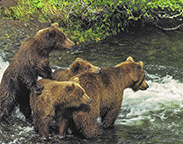
Thursday, January 22, 2015
Film Premier
Wilderness in America:
From Conquest to Conservation
Films by Fulcrum debuts its first hour-long film, a documentary about the history of America and its land – showing how the perception of land in America has changed over the past 400 years, from something to be conquered to something that should be protected for the enjoyment of current and future generations. America has a conservation legacy unmatched anywhere in the world. Almost 30% of the land in the United States – our National Parks, National Forests, wild rivers, wilderness, and other lands are owned by us, the people of the United Sates. See how leaders, writers, artists, and photographers have changed our thinking from conquest to conservation.
Special location and time: 5:30 pm at the University Club, 1673 Sherman Street, Denver, CO 80203.
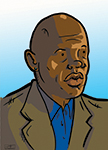
Thursday, February 19, 2015
Joel Gill
Strange Fruit
A Comics Anthology of Uncelebrated Narratives from
Black History
Joel took his book title from the Billie Holiday song “Strange Fruit” about lynched African American people “hangin’ from the poplar trees.” The song is based on Abel Meeropol’s powerful poem (of the same name). Come listen to Joel Gill talk about the stories of nine amazing people, learn about Henry “Box” Brown who used a box to escape slavery, Marshall “Major” Taylor who was bicycle Champion of the World in 1899 and Bass Reeves who arrested 3,000 men single-handedly in the Old West. Use Black History Month to learn more about these amazing historical figures and expand your knowledge of America’s past.
“The superheroes in Strange Fruit are extraordinary – ordinary black folks making a way
out of no way” — Dr. Henry Louis Gates
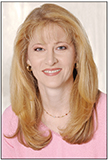
Thursday, March 19, 2015
Laura Pedersen
New York A Lighthearted History
The Dutch colony of New Netherland, was exceptional from the start. Its reason for being didn’t stem from a search for religious freedom or escape from political strife, but for the sole purpose of commerce. In fact, it would take eight years before anyone got around to building a church, though not because of any labor or lumber shortages, since several dozen saloons had gone up easily enough.
The citizenry was a rowdy polyglot speaking 18 different languages and included the infamous pirate Captain William Kidd. When the British came calling in 1664, the city changed hands without a struggle and was renamed after the Duke of York, brother to King Charles II.
New York would go on to give the world toilet paper, Christmas, skyscrapers, and the Broadway musical. However, the city began to fall on hard times in the mid-twentieth century.
By the 1970s New York was in its late middle-age Elizabeth Taylor period—formerly glamorous but now broke, bloated, and drug-addicted, with only her diehard fans remaining. It was impossible to know if the Babylonian Burg, with its social contract under siege, was in a death spiral or hitting rock bottom prior to the greatest comeback in history. Not surprisingly, the city would surprise us once again.
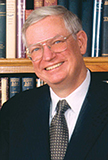
Thursday, April 16
Bob Baron
Journey to the Mountaintop
Nature and Meaning
Much of modern life leads away from contemplation and understanding. But for centuries humankind has made journeys to mountaintops in search of meaning. Two friends set out to discover the source of meaning in the natural world. One a painter, the other a writer.
In 2000, Bob signed a contract with Tom Locker for a book on Henry David Thoreau. While Tom was working on the book, he had a heart problem and his descending aorta blew. That is a situation that is fatal in about 95% of the cases and Tom was pronounced dead. The doctors brought him back to life.
From that time Tom valued each day. When Tom got out of the hospital, he couldn’t walk more than a few feet without having to rest. Eventually he built up his strength and endurance and he and Bob walked through Tom’s beloved Katerskill Clove in upstate New York. They climbed a mountain and that journey is contained in a book they did together.
This session will ask the unanswerable but essential questions. Each of us will deal with life and death in our own way, but we will have to deal with them.
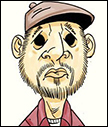
Thursday, May 21, 2015
Jason Rodriguez
Introduction to Graphic Novels
Graphic Novels, the medium of the 21st century, are used both for fun and to facilitate learning. Readers love the marriage of text and illustrations to lose themselves in a story, and educators like the flexibility of use in adult literacy classes, with late-readers and as an ESL (English as a Second Language) device since the illustrations help the reader interpret the story.
Jason is the editor of Colonial Comics: 1620 – 1750, and will describe how graphic novels open up the educational experience to young people by using good stories, art and excellent scholarship. Educators are discovering that reluctant readers and others for whom reading doesn’t come naturally respond especially well to this format. Many topics are more attainable in this new genre which had gained recognition from educators, booksellers and libraries. Explore history and a new literary format with us. Interest in graphic novels spans an exceptionally wide age range making them unique in educational arenas.
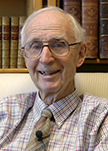
Thursday, June 18, 2015
Bruce Paton
Nature and Art Seeing vs Looking
Bruce Paton, author, artist, and photographer knows that people can look at something, but not really “see” what they’re looking at. That there is a difference between looking at, glancing at, or scanning something than truly seeing it. Seeing implies not only taking an image in visually, but also perceiving, observing, recognizing, and understanding it. It is more than a quick glance. A great deal of being an artist is in how one views, and then interprets, the scene around them.
Artists throughout time have shown us the world in a multitude of ways. In this seminar Bruce Paton will explore options to look at beauty so that we learn to better see what we are viewing. Using examples of various styles and medias Bruce will present different techniques used in art to convey emotion, temperature, season, distance and time period. He will explore the intent of artists and their purpose in choosing to portray a particular scene in a certain way. Bruce will even offer you the experience of sketching and ways to develop a visual record of your own impressions.
Come join us in exploring art inspired by the wilderness. Whether you are an artist or an appreciator of art, this will be an interesting day.
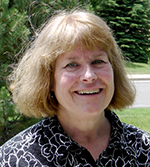
Thursday, July 16, 2015
Patty Maher
Colorado History Mysteries
And Other Weird Stories
Have you heard the story of the son who gave his mother a going away gift that brought her, and the plane she was flying in, down out of the sky? This was possibly the first terrorist act to have originated at Stapleton Airport.
Or, have you driven west on Highway 285 toward Morrison and wondered about the mysterious red vertical line that runs from the top of Mount Morrison down to the right of the Red Rocks Amphitheater? What about the US Mint worker who smuggled out gold bars, while working the night shift, stumping the security guards as to how the gold was vanishing? These are just a sampling of the Colorado history mysteries we’ll discover during this 3rd Third.
Colorado has a past loaded with interesting and fascinating people. Some are even a bit odd. Come enjoy their colorful tales and other weird happenings while we spend the day discussing Colorado history mysteries.
Patty Maher is a Colorado native who has wondered about some of the weird and wacky stories she heard growing up. In looking into them further, more stories or tidbits were found leading to other interesting facts and outlandish stories about the rough and tumble Centennial State. Patty writes the column "History Mystery: an occasional series of historical oddities" for Colorado Heritage, History Colorado’s quarterly magazine.
Thursday, August 20, 2015
Jo Arney
Wilderness -- A New Ethic of Citizenship
Henry David Thoreau once wrote, “In Wildness is the preservation of the World.” His observation was clear, mankind needs to live together with nature or the two will perish independently. Jo Arney, professor at the University of Wisconsin – LaCrosse, has taken this a step further and maintains that living with and nurturing wildness is the essence of a New Ethic of Citizenship.
An ethic that will not only ensure our preservation and that of the natural world, but an ethic that will enrich our lives, our mental well-being, and our appreciation for the systems that keep us alive.
Why save wilderness areas? Jo Arney will show how wilderness and it preservation encompasses generations, past and future, who need access to wilderness for physical and mental health. Wilderness teaches those of us who experience the untrammeled spaces many things. Remember that Jesus, Muhammad, and Buddha all went into the wilderness for inspiration.
Thursday, September 17, 2015
Tom Noel "Dr. Colorado"
Colorado, The Highest State
Settle in for a day of interesting Colorado history told by none other than Tom “Dr. Colorado” Noel. Tom will regale us with stories from his most recent book Colorado: A Historical Atlas in which he explores everything from dinosaurs to DIA, from Mesa Verde to today’s exploding suburbs, from stagecoaches to brew pubs, from sports to the contributions of women and various ethnic groups, from tragedies such as Sand Creek to the strangest things about the “highest state.”
It’s well known that Colorado received its name (Spanish for “red”) after much debate. But did you know that there were many other possibilities being considered such as Idaho (an “Indian” name meaning “gem of the mountains” later discovered to be a fabrication) and Yampa (Ute for “bear”)?
Tom will also share with us stories of his Fulcrum books, Riding High: Colorado Ranchers and 100 Years of the National Western Stock Show, Colorado: A liquid History & Tavern Guide to the Highest State and Thomas Hornsby Ferril & The American West and perhaps a few stories from his 40 other books.
This seminar will have information—and surprises—that anyone interested in Colorado will relish.
Thomas Jacob Noel is a Professor of History and Director of Public History, Preservation & Colorado Studies at the University of Colorado Denver. He is also co-director of the Center for Colorado & The West at the Auraria Library. Tom is the author or co-author of 44 books, many articles and a Sunday history column for The Denver Post. He appears regularly as “Dr. Colorado” on Channel 9’s “Colorado & Company.”

Thursday, October 15, 2015
Gail Lindley
Bookbinding Uncovered
Gail Lindley loves and restores books. Be it the antique family bible or your mother’s dog eared (but beloved) copy of The Bobbsey Twins, Gail and her company Denver Bookbinding have been hand binding and restoring precious books for five generations. Her grandfather was a Master Bookbinder in Denmark (he apprenticed in the King’s Court in Copenhagen) before coming to Denver and buying his own business in 1946.
There are many components to a book. In the early days books were printed on vellum, papyrus and parchment. Today we have similar choices but we also have access to a large variety of papers. Did you know that the grain of the paper (the direction of the fibers) can make or break your book? You’ve no doubt heard the term “against the grain.” Gail will talk about the reasoning behind that.
Not only will you learn about the history, the materials, and process of making a hand bound book, you will make one yourself. Gail will provide all materials. Ladies: be sure and bring an antique button or an earring that has lost its mate (for example) if you want to add a personal touch to your creation. Gentlemen: yes, you will enjoy this too! Bring a necktie if you would like to have it immortalized on your hand bound journal or gift book. If not a tie, or antique button, bring a photograph for the front cover, if you wish.
Also, if you have a special book in need of repair, bring it along. Gail can tell you what would be needed for its restoration and she may use it as an example during the seminar.
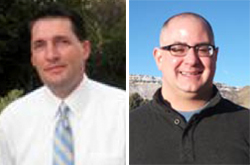
Thursday, November 19, 2015
Jason Gilman and Sam Scinta
Trends in Urban and Rural Planning
And How They Affect Us
Join noted regional land use and environmental planner Jason Gilman and professor Sam Scinta for a conversation about current trends in urban and rural planning, the role such planning plays in environmental and social issues, how civics plays a part in urban and rural development, and the impact the millennial generation will have on current planning models. The session will provide an historical context, as well as insights into the future, examining different models across the country.
Urban sprawl. Traffic congestion. Battles over green space. Unsustainable development impacts. For years, our development patterns have exposed many conflicts over land-use planning. Cities, counties and states have responded with creative (and at times, counterproductive) solutions, aimed at achieving balance between population demands and land realities. Today, as more people begin moving back into urban centers, as millennials show an aversion for the McMansion lifestyle and as the state of our resources demand attention, the land use planning process takes on a major public policy role.
After this session, you will never look at your neighborhood in the same way.
To register call: 303-277-1623, ext 220, or register via email here. You will receive a confirmation.
Missed a seminar? Let us know. If there is enough interest, we will hold the seminar again. Email your request to Seminar Repeat / Ideas.

